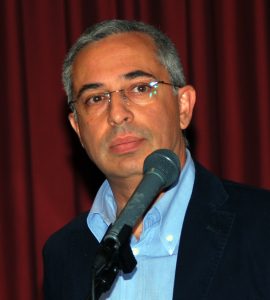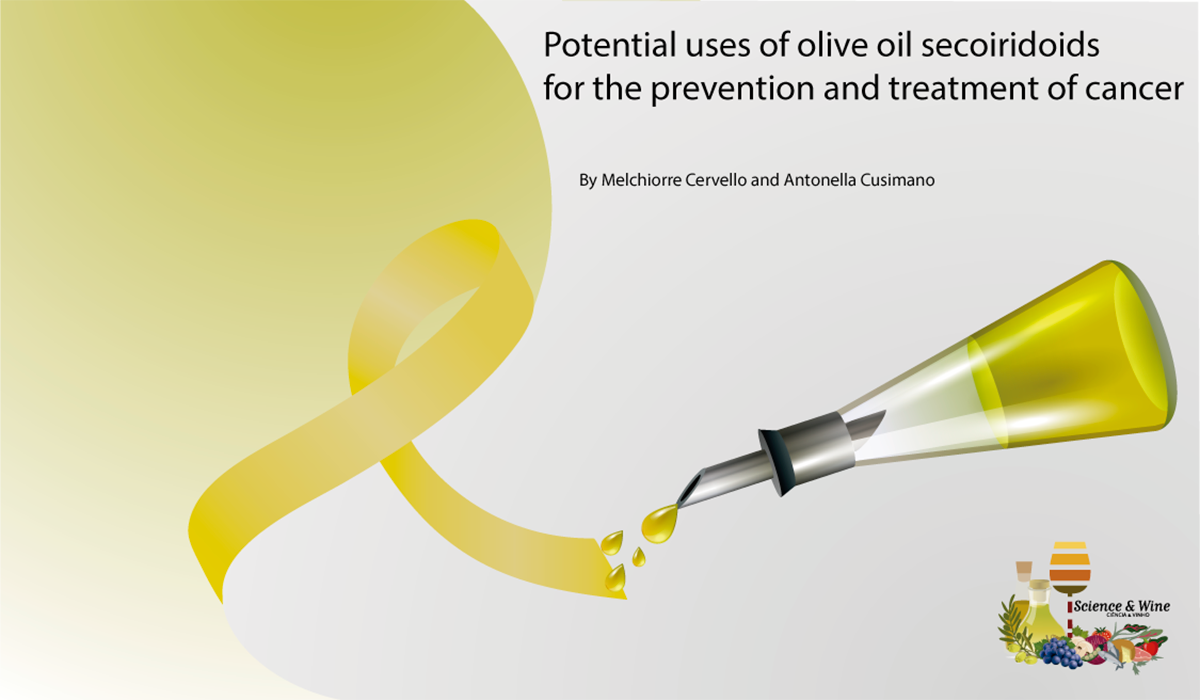By Melchiorre Cervello and Antonella Cusimano
Despite the great advances’ science has made in recent years, cancer remains an emergency, a priority, and an unanswered question. Cancer incidence and mortality are rapidly increasing, and today more than ever, they are correlated with the social and economic development level of nations, as well as with the lifestyle habits of individual citizens. Bad habits such as cigarette smoking, high-fat diets, little physical exercise, and lack of daily fruit and vegetable consumption are recognized as risk factors for cancer. A healthy diet and balanced eating habits are essential for cancer prevention for two fundamental reasons: first, abnormalities in food behaviour and an unbalanced diet, such as the Western diet, can cause several diseases; second, many phytochemical compounds contained in food, often in fruits and vegetables, protect against cancer and other diseases. Diet can be both a source of protection and a risk factor at the same time, depending on the components of the foods that compose it. A balanced diet is essential for obtaining maximum health benefits. The Mediterranean diet (MD) represents one of the healthiest diet patterns in the world, due to the balanced combination of healthy foods, rich in antioxidant and anti-inflammatory compounds, particularly fruits and vegetables, which can play a protective role against the onset of several diseases, including cancer.
Numerous epidemiological studies have confirmed the lower risk of cancer and other chronic inflammation-associated diseases in populations of the Mediterranean area which follow the MD according to local traditions and habits. Olive oil is one of the main and distinctive elements of the MD. Several epidemiological, as well as preclinical studies, support the health benefits and the importance of extra-virgin olive oil (EVOO) in cancer prevention, mainly due to its antioxidant power.
Evidence supports the idea that part of its cancer-preventive capacity is due to a minor component of EVOO (about 2% of oil by weight) which includes more than 230 chemical compounds. In particular, the beneficial effects of EVOO are attributed to the phenolic compounds hydroxytyrosol (Htyr) and tyrosol (Tyr), along with secoiridoids, which include oleocanthal (OC), oleacein (OA), oleuropein, and ligstroside (along with the aglycone and glycosidic derivatives of the latter two). These phenolic EVOO compounds have shown a wide spectrum of biological effects, including cardioprotective, antimicrobial, neuroprotective and anticancer effects.
The anti-inflammatory activity of the phenolic components of EVOO has been investigated in many inflammation-related diseases. OC, for example, acts as a non-selective cyclooxygenase (COX) inhibitor, ibuprofen-like, and therefore as an anti-inflammatory agent. Recently, particular attention has been focused on the anticancer properties of secoiridoids since chronic inflammation is considered a factor facilitating the early stages of carcinogenesis.
Secoiridoids are bioactive polyphenols found exclusively in all 500 species of Oleaceae plants, including the European olive tree (Olea europaea L.). Most secoiridoid phenolic derivatives in olive oil come from oleuropein and ligstroside, following a series of chemical transformation. In vitro and in vivo studies performed in recent years have shown that secoiridoids exert a potent anticancer activity in different types of cancer. The most studied cancer models are breast and colon cancer, as well as hepatocellular carcinoma (HCC), but the anti-tumoral effects of secoiridoids have also been investigated in other cancers.
In preclinical studies, it has been shown that different secoiridoids exert anti-tumour activity by acting on different cellular pathways that regulate the proliferation, apoptosis, migration, and invasion of cancer cells, although with different molecular targets, depending on the tumour type. Notably, these compounds have different behaviours, antioxidant, or pro-oxidant, depending on the dose used. In some cases, they may act as pro-oxidants by increasing the production of ROS, resulting in DNA damage and cell death.
Mechanistically, secoiridoids block proliferation by inhibiting AKT and ERK, induce apoptosis by interfering with the expression of pro-apoptotic or anti-apoptotic proteins, modulate the autophagy pathway, and regulate cell migration by acting on metalloproteinases. Secoiridoids are also able to modulate the basic mechanisms of epithelial mesenchymal transition (EMT), which results in tumour invasiveness and metastasis. In fact, in breast cancer, Tyr modulates the β-catenin and TGF-β pathways, and OC exerts its effect on the HER2/MET pathway and reduces vimentin by significantly inhibiting the tumour recurrence rate.

The action on cancer cell migration and recurrence rate suggests the possible exploitation of these compounds in post-surgery therapy. Accordingly, studies have been conducted on the combined treatment of secoiridoids with other chemotherapeutic drugs, i.e., OC plus lapatinib; OC plus Tamoxifen; oleuropein plus cisplatin or trastuzumab; Tyr plus paclitaxel. The results of these studies have led to the important result that the addition of secoiridoids resulted in synergistic effects in reducing tumour cell proliferation. Furthermore, last but not least, secoiridoids have not been found to be cytotoxic for healthy cells. Some controversial results have emerged related to the dose used; for example, Htyr in breast cancer cells appears to have proangiogenic effects at high doses. However, the amounts of data in favour of the anti-tumour action of secoiridoids, including Htyr, are dominant and encouraging. Recently, many clinical trials, completed or in progress, have been performed to evaluate the effects of EVOO and MD as a support for therapeutic protocols in different types of cancer, confirming the substantial benefits that the various components of EVOO and the MD bring to the health of cancer patients.
We would like to conclude that, although the results obtained to date are limited to the preclinical experimental phase, they clearly show that secoiridoids have the potential to be suitable for more significant applications in anticancer therapies in the near future.
See all at: https://doi.org/10.3390/ijms22031234

Melchiorre Cervello 
Antonella Cusimano 

